The 8th
LaureatePainting
Cy Twombly
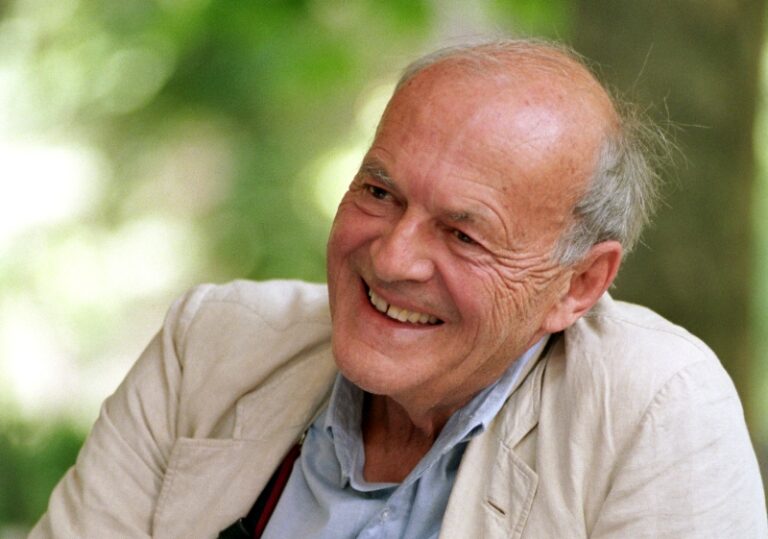
Cy Twombly’s work is based on the ancient art of graffiti. His paintings – often large white or off-white canvases covered with inscriptions,abstract writing,diagrams and cartoon-like events – evoke the still living culture of Greece and Rome as well as the equally timeless scribbles of children and the disturbed. He travelled through Europe and North Africa as a young man with Robert Rauschenberg; around the same time he met John Cage and was influenced by the composer’s awareness of the role of silence in music. Twombly’s art is the opposite of neoclassical: rather than imitating the forms of classical civilization he invokes its spirit and its mythologies. He has lived in Rome since 1957 and continues to echo and obliquely to comment on Europe’s and the west’s cultural inheritance.
Biography
The son of a baseball player,Cy Twombly is one of today’s most widely admired painters. Where de Kooning’s art celebrates the affective power of brushstrokes and colours,and David Hockney’s plays with the power of pictures to represent and misrepresent,Twombly has based his work on the perhaps even more ancient art of graffiti – as well as on the timeless drawings and scribbles of children and the disturbed. That Twombly’s art should impress us as triumphantly elegant separates it from its precursors in modern art,notably in the work of Paul Klee,and from the automatist image-making of the surrealists,as well as from Dubuffet’s sophisticated appropriations of urban scrawls.
Mark Tobey’s ‘white writing’ and Bradley Walker Tomlin’s white brushstrokes encouraged Twombly in his use of pictures as surfaces for inscriptions of many kinds,but his attitude to the world of words and images probably owes more to his association with Robert Rauschenberg. His conventional training at the Boston Museum School of Fine Arts and the New York Art Students League was capped by some months during 1951–52 at Black Mountain College,where he worked under Rauschenberg and Franz Kline. His close friendship with Rauschenberg continued during the 1950s when they travelled together through Italy,Spain and North Africa. It also brought him into contact with the world of the composer John Cage and the choreographer Merce Cunningham and through them with an intense questioning of the past and present values associated with the production of art.
While Rauschenberg,in the fifties,moved his art from a sort of critical minimalism into all-embracing forms and images,Twombly’s became more delicate and increasingly dedicated to evoking ancient myths. In 1957 he moved from Virginia to Rome,into the light of the Mediterranean and the heart of the world where these myths were conceived and enriched to the point where they could bridge high and popular culture. Rather like a composer setting loved poems to music,Twombly has dedicated his art to referring to,echoing and obliquely commenting on Europe’s precious inheritance. Often he uses white and off-white canvases as fields of light to bear his inscriptions,abstract writing,cursive representations and diagrams. On this ground he has employed a wide variety of graphic and painterly means,from pencil or chalk to thick oil paint with and without colour,to invoke the whole,still living culture of Greece and Rome. In 1955 he made a series of black paintings marked with chalk of which only one remains (in Rauschenberg’s collection); a second series,made during 1966,survives. Twombly’s magnum opus may well be his series of meditations on Homer’s Iliad (Fifty Days at Iliam) on ten canvases of 1978.
Since then,as also earlier in the fifties,he has made small constructions assembled from found materials and mostly painted white to bring them into the Twombly sphere. Whiteness is close to silence,an emptiness as well as a receptive area for all the ambient light and colours,just as the silent piano in John Cage’s 4'33" reveals the infinity of sounds on which that silence rests and their framing in time. Similarly Twombly’s fluid,unclassical compositions permit us to read his canvases as sections lifted out of the living stream of ancient culture and its continuing flow and fruition in renaissance and modern times. In this sense he is in the company of Keats and Shelley for their intense,personal embrace of the past,expressed in new forms of poetry,rather than to be associated with the neo-classical artists who adopted,as nearly as they could,the finest visual forms of antiquity for images of ancient and modern heroicism.
From 1951 Twombly has had frequent solo exhibitions in America and,from 1953,in Europe. Since the 1960s his art has been seen almost continuously all over the world. Its continuing fascination resides in its inherent contradictions: its often chaotic appearance combined with its function as monuments to history; the impersonality of his marks combined with their suggestion of the most private handwriting,not meant for the public gaze; the uncouthness conveyed by the graffiti idiom ennobled by quotations from and references to noble sources; the spontaneity and apparent impermanence of the inscriptions,annotations and designs on his canvases and their permanence as works of art; especially the sense they give of being art at its most primordial and primitive,whilst clearly being the product of a mind of exceptional sophistication and almost dandyish grace.
If we see him as a pictorial writer we recognize also that literary writers do not work with such freedom from conventions. He put into his collage picture Adonais,1975,words one would also wish to apply to him: ‘He has outsoared the shadow of night’.
Norbert Lynton
He passed away on July 5,2011,Roma.
Chronology
Cy Twombly. a retrospective / Kirk Varnedoe. New York : Museum of Modern Art ; London : Thames and Hudson. Distributor,1995,c1994.
Cy Twombly / Roland Barthes. Berlin : Merve Verlag,1983.
Publisher Name: Prestel-Verlag.
Cy Twombly / Cy Twombly. Houston : Menil Collection. Houston Fine Art Press,1990.
-
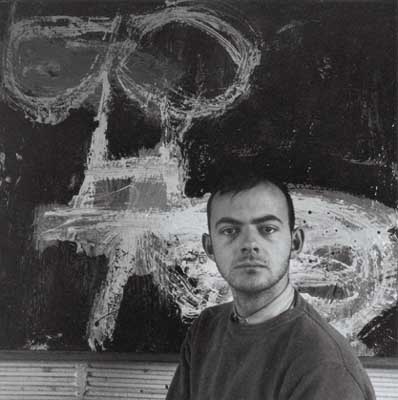
Cy, Black Mountain, 1951.
-
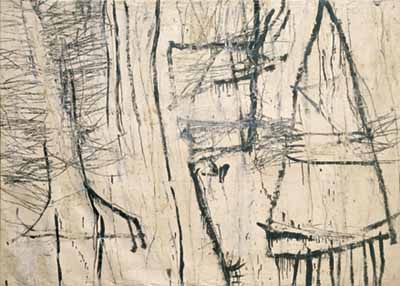
Tiznit, 1953
-
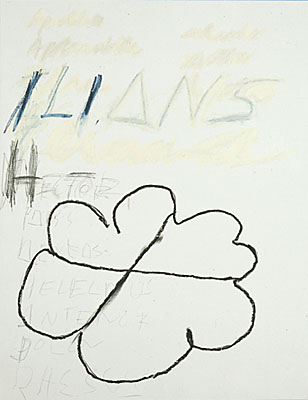
Heroes of Ilians
-
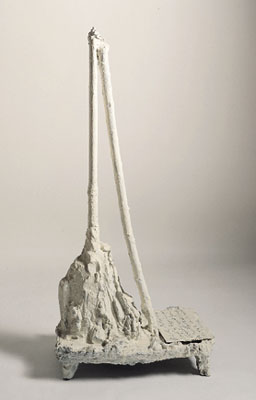
Untitled, painted bronze, 1987
-
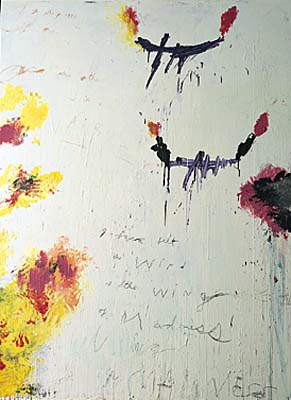
Untitled, 1992

